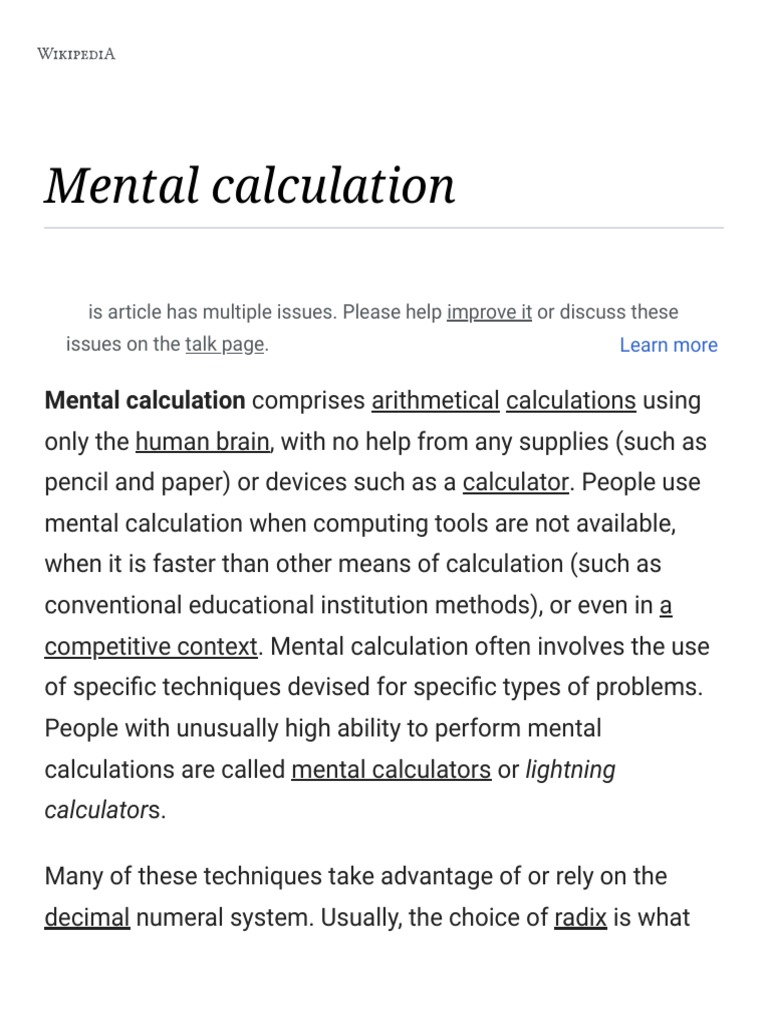Mental calculation is a fascinating cognitive exercise that not only sharpens one’s arithmetic skills but also engages the brain in a manner that cultivates analytical thinking. Among various calculations, determining the product of 11 and 33 presents an intriguing opportunity to illustrate effective mental strategies. The task may appear simple; however, delving deeper reveals a tapestry of methodologies that can enhance computational fluency. This discussion will explore various mental calculation methods for (11 times 33), providing insights into why these techniques are not merely mathematical tricks but gateways into enhancing cognitive capacity.
A prevalent observation in the realm of mental mathematics is the reliance on concrete methods that can be universally applied, such as decomposition, the distributive property, and pattern recognition. Each of these methods encapsulates a different cognitive approach, allowing for varied styles and preferences in mental arithmetic. One might find that employing these techniques not only serves immediate computational needs but also aids in developing a robust numerical intuition.
To begin with, let’s consider the straightforward approach of decomposition. This technique involves breaking the numbers into manageable components, rendering them less intimidating. For (11 times 33), one can reframe (33) as the sum of (30) and (3). The equation thus transforms into two simpler multiplications:
1. (11 times 30)
2. (11 times 3)
The first calculation can be deduced as follows:
(11 times 30 = 330)
Next, the second computation yields:
(11 times 3 = 33)
Now, by combining these products, we see the culmination of our efforts:
(330 + 33 = 363)
This method not only simplifies the computation but also engenders a profound appreciation for the relationships inherent in numbers. By segmenting one of the factors, we can utilize our existing knowledge of multiplication facts effectively and derive an accurate result with minimal effort.
Another compelling technique is the distributive property which informs the structure of our calculations. This property posits that the product of a sum is equivalent to the sum of the products. Illustrated in the (11 times 33) example, we use the same decomposition:
Using the distributive property:
(11 times (30 + 3) = (11 times 30) + (11 times 3))
Here again, we navigate through simple multiplications, reinforcing both our initial calculation while simultaneously adhering to mathematical laws that govern operations. Seeing mathematics through the lens of distributive principles can foster a higher level of engagement with the content, accommodating learners with varied preferences.
Moreover, an intrinsic fascination with numerical patterns often emerges during mental mathematics. The number (11) exhibits unique properties; it is a palindromic number and also has a predictable multiplication pattern. When multiplying numbers by (11), one can observe a pattern where spaces between the digits of the other multiplicand yield digits of the product. Though this method presents a conceptual leap from direct computation, it demonstrates the profound interplay between numeric relationships:
Consider (11 times 33). By writing (33) with an implicit zero:
3 _ 3
When encapsulated and summed vertically, the numbers combine to yield (3 + 3 = 6). Thus, the resulting structure appears as:
363
This not only confirms our earlier calculations but also underscores the intrinsic elegance present in mathematical operations. The mental exercise involved in discovering and applying such patterns highlights the fascination with numbers, reconciling foundation and creativity.
Furthermore, visualization and strategic planning can also illuminate the path to solving (11 times 33). By envisioning a rectangular array or grid to represent this multiplication, one can align (11) across the horizontal and (33) down the vertical. This geometric representation provides insights into the area model of multiplication, where each partition yields a sub-product contributing to the overall area—thus forming (11 times 33) as a composite structure:
The array formed demonstrates (11) sections of (33), engaging spatial reasoning alongside numerical insight. By extending or manipulating dimensions, one gains captivating visual fluency that complements numerical calculation, fostering a holistic understanding of arithmetic processes.
As we draw conclusions regarding the strategies for calculating (11 times 33), it becomes evident that various techniques not only serve to enhance numerical acuity but also resonate deeply with cognitive development and engagement. These methods cultivate an appreciation for the fluidity of numbers and the inherent connections among them. Thus, whether through systematic decomposition, the distributive property, engagement with patterns, or geometric interpretations, the mental journey of calculating requires not merely computational prowess but an embracement of the multifaceted landscape of numeracy.
Ultimately, fostering these techniques paves the way for a richer mathematical experience, one that transcends the mere arithmetic operation and invites deeper exploration into the essence of mathematics itself. Such engagements sharpen the intellect and nurture a lasting fascination with the world of numbers.












